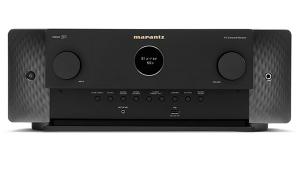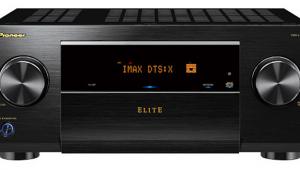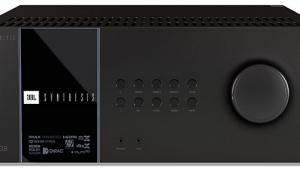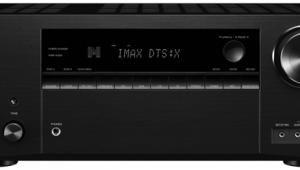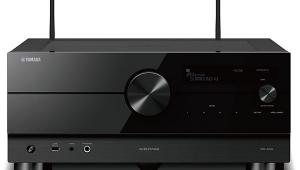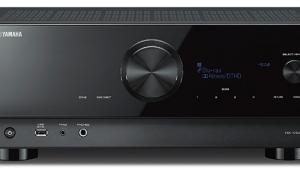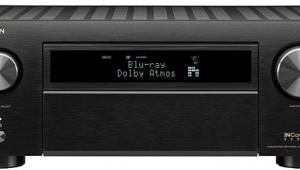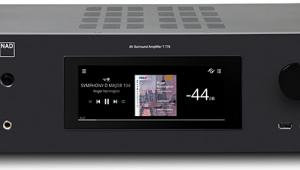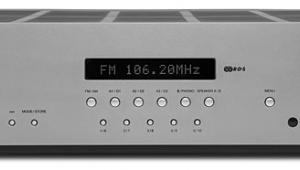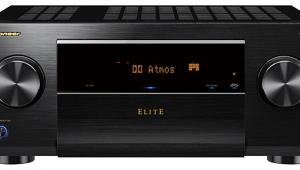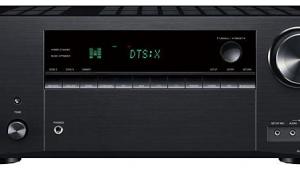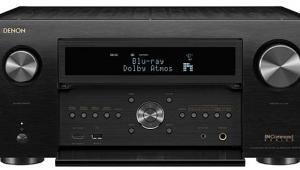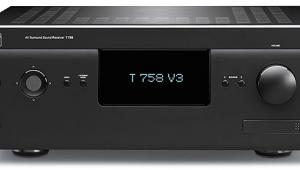Yamaha RX-V371 A/V receiver
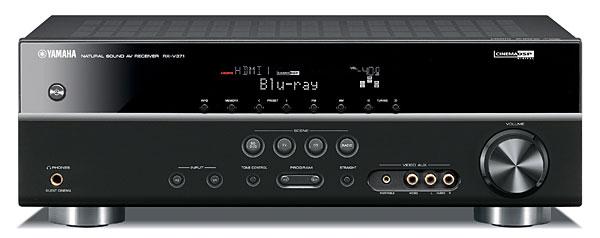
The Yamaha RX-V371 offers some excellent features for an entry-level A/V receiver. To keep the cost down, however, there are significant compromises, such as the lack of an onscreen display and auto calibration for an easier and faster setup. Also, spring-loaded speaker terminals for the center and surround channels prevent the use of higher-end cables. Once it is set up, the unit's sonic performance is good—in fact, surprisingly good for an AVR at this price point.
Features
The RX-V371 represents just how far we've come in AVR development. Not that long ago, you wouldn't see audio codecs such as Dolby TrueHD and DTS-HD High Resolution in a unit at this price. (Note: DTS-HD Master Audio is not supported.) And even though 3D is still a relatively new technology, the RX-V371's compatibility demonstrates how quickly it is being adopted.
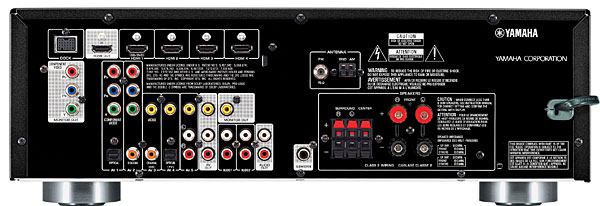
Yamaha has also integrated some of its core technologies into this unit to keep it comparable in some respects with more expensive models in their lineup. For instance, Cinema DSP can be engaged with any surround codec for more realistic placement of dialog, music, and effects with greater presence. Yamaha further claims that this exclusive function creates smoother movement from channel to channel with increased clarity and richness of tone.
Four Scene buttons automatically activate several operations with a single command, such as switching inputs and surround formats. The default settings are BD/DVD Viewing, CD Disc Listening, TV Viewing, and Radio Listening. However, there are other pre-defined Scene settings that you can assign to the four buttons, such as Action Game Playing and TV Sports Viewing.
With the optional YDS-12 Universal Dock, the RX-V371 can play music from an iPod or iPhone, and the optional YBA-10 adds wireless Bluetooth functionality. With the Compressed Music Enhancer circuit, frequency response is restored for improved playback of the MP3 files from these devices.
The Background Video feature lets you play video with audio from another source, which is a very cool feature for photo slide shows.
 Ergonomics
Ergonomics
The overall look and feel of the RX-V371 is comparable with the company's higher-end units. You can tell it's part of a complete product line without being overly compromised in its appearance just to reach a particular price point. There are fewer buttons on the front panel than you would find on more expensive components, but that means there is less for you to learn.
The learning/universal remote can be used with multiple devices, whether they are made by Yamaha or not. It's not the most ergonomically designed remote, but once you finish the setup, you'll use only a few buttons all the time anyway.
Setup
If you read my review of the Sony STR-DH520, you know I'm not a fan of spring-loaded speaker terminals. Reviewing the Sony required me to completely rewire my system to accommodate bare-wire cables. The Yamaha benefited from the fact that I replaced the Sony with it and didn't have to do any additional wiring. So, while my setup experience was less disruptive, the Yamaha still loses points with me for this type of terminal configuration.
There is no onscreen display, requiring you to use only the front-panel display to scroll through the speaker-size and level adjustments. Also, there is no auto-calibration, so you are relegated to manual setup. The user manual has a hierarchy chart to help you navigate the setup options, but there is no printed manual. It only comes on a CD, so if your computer isn't next to you're A/V system, it's not very convenient unless you put the PDF of the manual onto an iPad, which is what I did.
The main reason I didn't designate this AVR as a Top Pick is that it lacks these convenient setup features. For only a bit more money, you can have it all. However, I did find the audio performance to be better than the aforementioned Sony, and that's why it's performance rating is a bit higher.
Performance
I am generally impressed with the audio performance of the sub-$300 AVRs I've heard lately. I don't think they've ever sounded so crisp and clear. If price is a major consideration, then you're not going to be disappointed by the audio quality for the money spent. All sources from broadcast to games played on the Sony PS3 performed extremely well. The Yamaha was rich in tone and easily handled high volumes. Except for slightly audible subwoofer clipping on extreme bass content, distortion was never an issue.
Surround envelopment was quite convincing, especially with Yamaha's Cinema DSP. Surround effects were noticeably wider with this feature engaged, creating a more spacious and immersive surround soundfield. There are several Cinema DSP modes, and I left it on Standard, which is recommended for movies, and it's the default setting for the BD/DVD Scene button. I did find I needed to crank up the center channel quite a bit to get a good balance with the dialog.
The RX-V371 offers fewer Dolby and DTS surround modes in lieu of Yamaha's 17 DSP presets, though it does decode Dolby TrueHD and DTS-HD High Resolution (not DTS-HD Master Audio lossless). The LCD display does not indicate when it is decoding a Dolby TrueHD or DTS-HD encoded disc, but the surround performance indicated to me it was decoding these tracks properly. Moreover, the 3D pass-through was flawless. As long as an AVR has HDMI 1.4, you're good to go, and with the lowest-priced AVRs providing this type of HDMI connection, it's pretty safe to say that virtually all newer AVRs these days are 3D compatible and shouldn't be a concern in your decision-making process.
